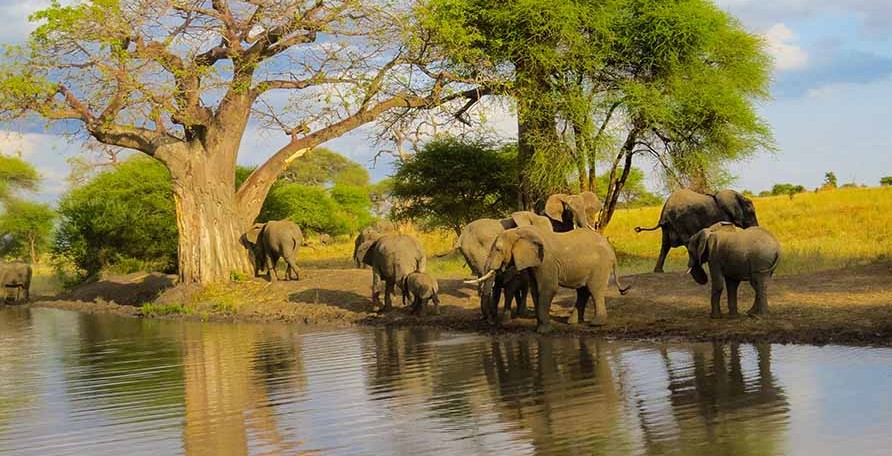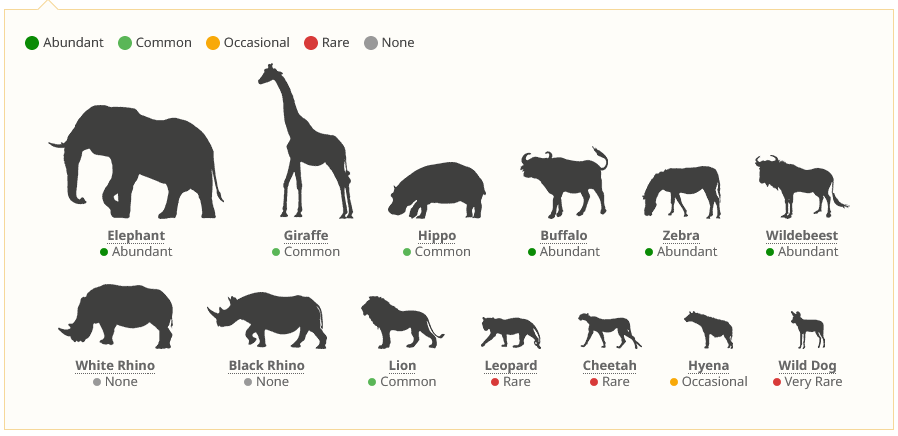Tarangire National Park, nestled in northern Tanzania, is renowned for its breathtaking landscapes and diverse wildlife, making it a must-visit destination for nature enthusiasts and safari lovers alike. Spanning over 2,850 square kilometers, the park is named after the Tarangire River, which flows through its boundaries, providing a vital water source during the dry season. This unique feature attracts an abundance of wildlife, especially from June to November when large herds migrate to the park in search of water, offering visitors unparalleled opportunities for game viewing.
One of the park’s most iconic sights is its impressive baobab trees, which dot the savannah landscape, creating a picturesque setting for wildlife photography and exploration. These ancient trees, some of which are over a thousand years old, stand as silent witnesses to the passage of time in this pristine wilderness. Additionally, Tarangire National Park is home to a rich variety of wildlife, including large elephant herds, zebras, wildebeests, giraffes, and numerous predators such as lions, leopards, and cheetahs. Bird enthusiasts will also be delighted by the park’s diverse avian population, with over 550 species recorded within its borders, making it a paradise for bird watching enthusiasts.

Beyond its abundant wildlife and scenic beauty, Tarangire National Park offers visitors a range of activities to immerse themselves in the African wilderness. From guided game drives and walking safaris to cultural interactions with the local Maasai communities, there’s something for everyone to experience and enjoy. Whether it’s witnessing the breathtaking sunset over the vast plains, listening to the symphony of sounds echoing through the bush, or simply marveling at the raw beauty of nature, Tarangire National Park promises an unforgettable adventure for all who venture into its midst.
July to November is the best time for wildlife viewing in Tarangire National Park. This coincides more or less with the middle and end of the Dry season. Many animals migrate out of the park during the Wet season (November to May), when wildlife viewing is considerably less productive.
The weather in Tarangire National Park is temperate and enjoyable. The Wet season consists of two rainy periods: the short rains (November to December) and the long rains (March to May). Around January and February rainfall decreases for a month or so. It usually rains in the afternoon and seldom for the entire day. It rarely gets too hot, but the evenings and mornings tend to get cold. Warm clothes for early morning game drives are recommended.
It is sunny and it hardly ever rains. It gets more dusty and the sky gets more hazy as the season progresses.
Afternoon temperatures are usually around 28°C/82°F, and nighttime temperatures are around 17°C/63°F.
From July to November the Tarangire River is a magnet for migratory animals such as wildebeest, zebra, eland, Coke’s hartebeest, gazelle, buffalo and elephant – of which there are more than you can imagine. Lions are quite easily spotted at this time, as well.

Tarangire National Park is home to several dry-country antelope species, such as the rare fringe-eared oryx and the peculiar, long-necked gerenuk. The swampy areas in the south of the park offer some interesting wildlife-viewing opportunities. Wallowing elephants and buffalo are a given, but you might also be lucky to see the Silale Swamp lion pride and sometimes even wild dogs.
July to November, when most of the water in the bush has dried up, is the best time for wildlife viewing. Large herds of animals migrate to the park from the surrounding areas. Animals are easier to spot because vegetation is thinner and wildlife gathers around the Tarangire River. From about December, many animals migrate out of the park again, and wildlife viewing is not as good.
Tarangire National Park is part of the popular Northern safari circuit and is typically visited together with Serengeti National Park and the Ngorongoro Crater. Most safaris start from the town of Arusha. The best way to get there is to fly into Kilimanjaro International Airport (JRO), which is 50km/31mi from Arusha. It is also possible to fly into Julius Nyerere International Airport (DAR) in Dar es Salaam and on to Arusha Airport (ARK) or Kilimanjaro International Airport (JRO).
There are regular flights from Arusha and Serengeti to Tarangire, but driving is a good option too. It is a comfortable 2-hour* drive from Arusha to the park entrance gate, of which only the last 7km/4mi is not tarred. Moving on, it is an easy drive to Lake Manyara National Park (100km/60mi in about 2 hours*) or the Ngorongoro Crater (180km/110mi in about 4 hours*).
Copyright Tanzania Local Tour Operators. 2023 – 2024. All Right Reserved
By completing this form you can apply for Membership account. Our team will review your application. When we have verified your application we will send you further instructions for the next step in the application process.